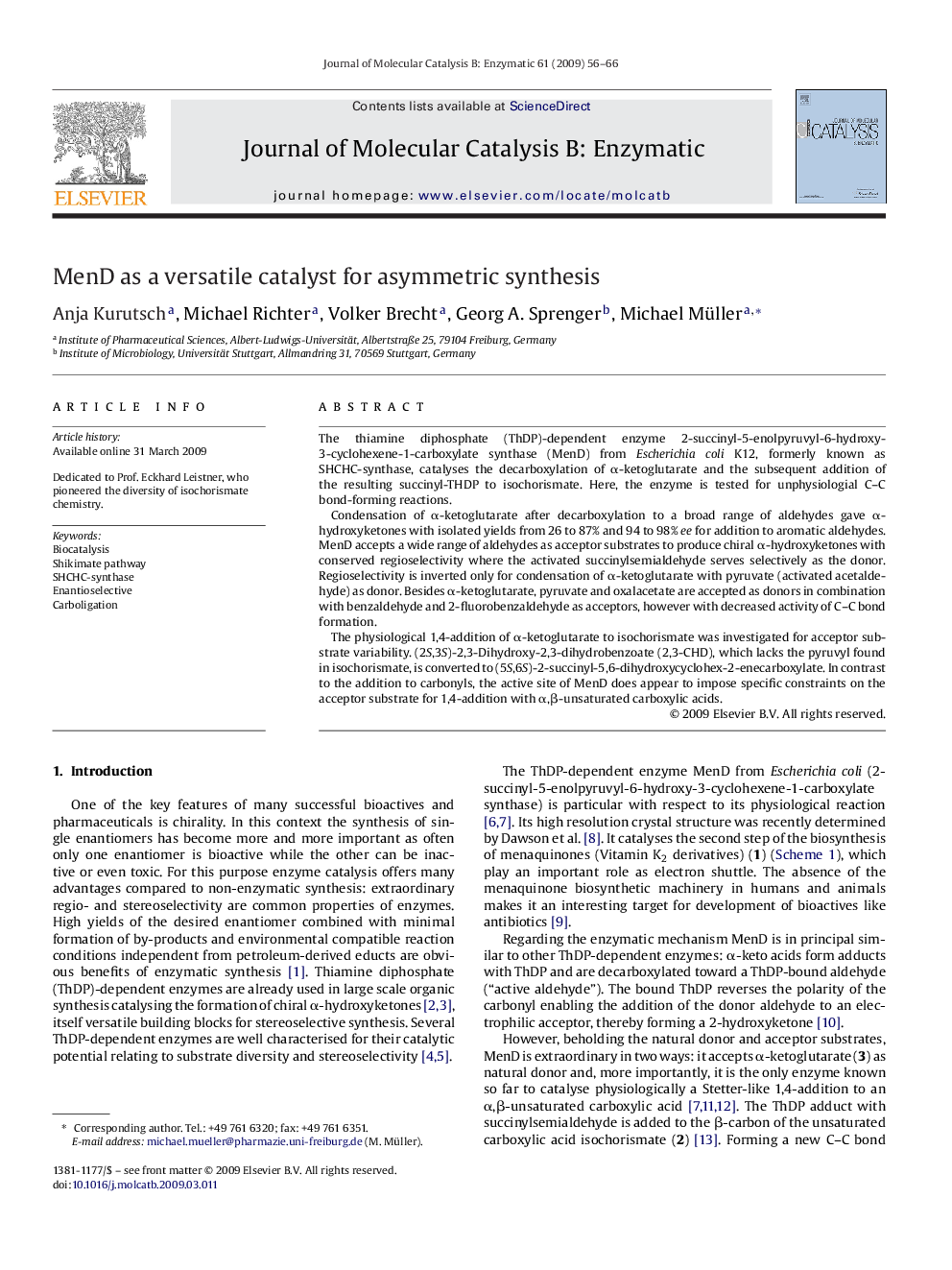| Article ID | Journal | Published Year | Pages | File Type |
|---|---|---|---|---|
| 70759 | Journal of Molecular Catalysis B: Enzymatic | 2009 | 11 Pages |
The thiamine diphosphate (ThDP)-dependent enzyme 2-succinyl-5-enolpyruvyl-6-hydroxy-3-cyclohexene-1-carboxylate synthase (MenD) from Escherichia coli K12, formerly known as SHCHC-synthase, catalyses the decarboxylation of α-ketoglutarate and the subsequent addition of the resulting succinyl-THDP to isochorismate. Here, the enzyme is tested for unphysiologial C–C bond-forming reactions.Condensation of α-ketoglutarate after decarboxylation to a broad range of aldehydes gave α-hydroxyketones with isolated yields from 26 to 87% and 94 to 98% ee for addition to aromatic aldehydes. MenD accepts a wide range of aldehydes as acceptor substrates to produce chiral α-hydroxyketones with conserved regioselectivity where the activated succinylsemialdehyde serves selectively as the donor. Regioselectivity is inverted only for condensation of α-ketoglutarate with pyruvate (activated acetaldehyde) as donor. Besides α-ketoglutarate, pyruvate and oxalacetate are accepted as donors in combination with benzaldehyde and 2-fluorobenzaldehyde as acceptors, however with decreased activity of C–C bond formation.The physiological 1,4-addition of α-ketoglutarate to isochorismate was investigated for acceptor substrate variability. (2S,3S)-2,3-Dihydroxy-2,3-dihydrobenzoate (2,3-CHD), which lacks the pyruvyl found in isochorismate, is converted to (5S,6S)-2-succinyl-5,6-dihydroxycyclohex-2-enecarboxylate. In contrast to the addition to carbonyls, the active site of MenD does appear to impose specific constraints on the acceptor substrate for 1,4-addition with α,β-unsaturated carboxylic acids.
